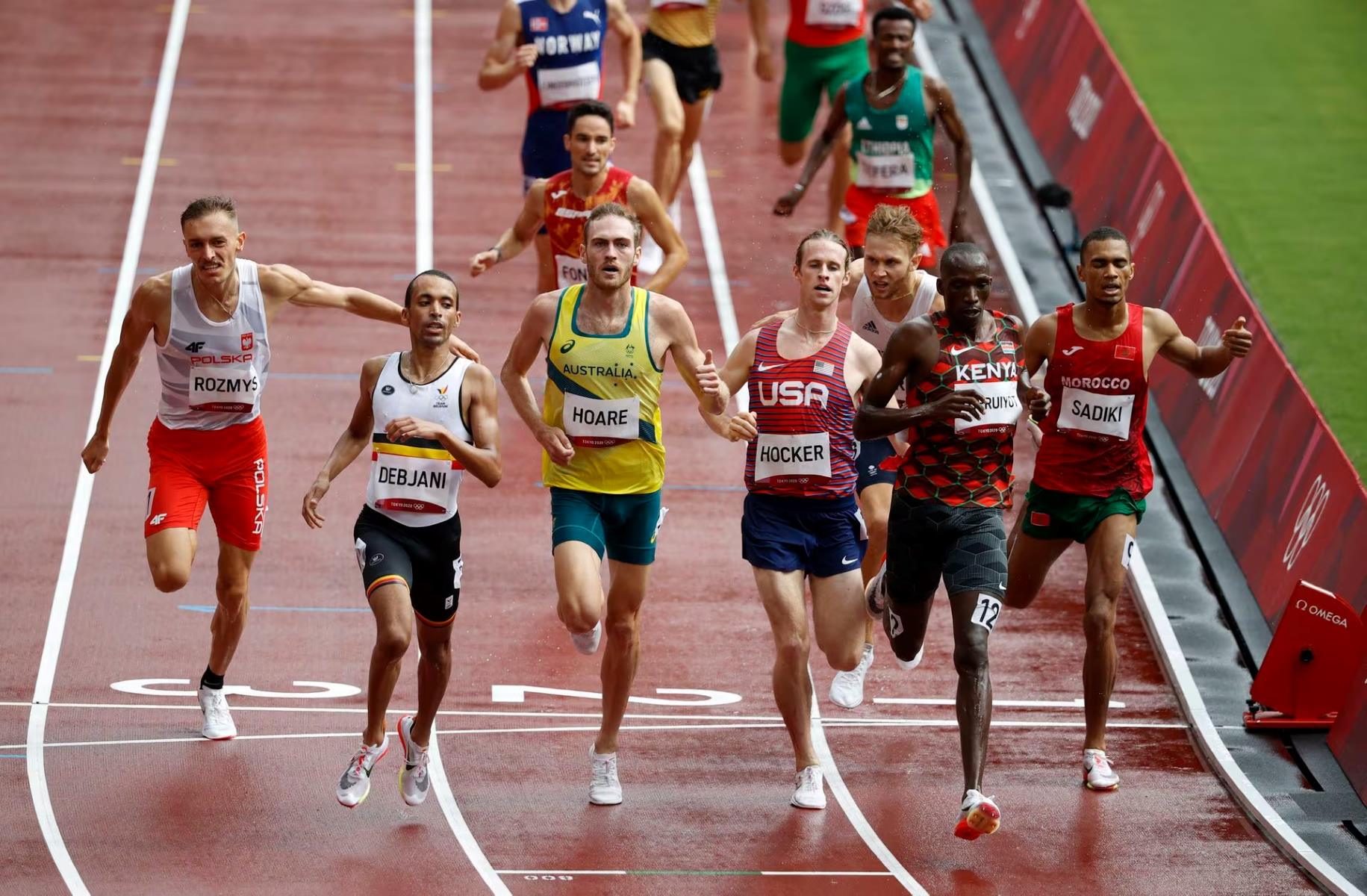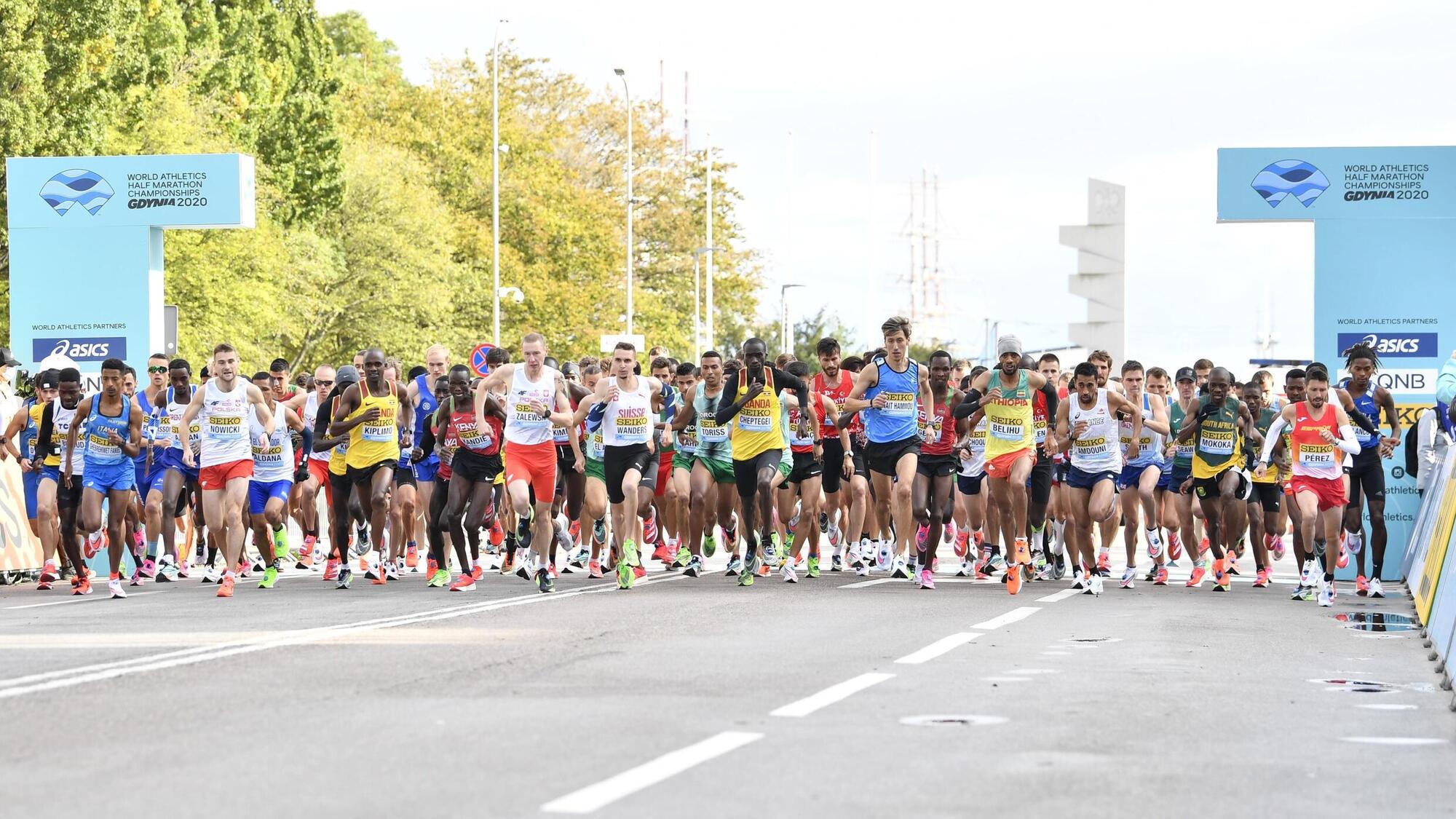Home>Misc>Featured>How Do They Assign Lanes In Track And Field


Featured
How Do They Assign Lanes In Track And Field
Published: September 5, 2023
Discover how lanes are assigned in track and field events. Get featured insights on how organizers allocate lanes based on various factors. Find out the key criteria and techniques used.
Introduction
Track and field events have been a staple of both recreational and competitive athletics for centuries, captivating audiences with their displays of speed, endurance, and skill. Whether it’s the exhilarating sprint races or the demanding hurdles, the allocation of lanes plays a crucial role in ensuring a fair and balanced competition. Understanding how lanes are assigned can shed light on the factors considered and the intricacies involved in creating a level playing field.
Assigning lanes in track and field events is not a random decision; rather, it is a meticulous process that takes various factors into account. The primary objective of lane assignment is to minimize any potential advantages or disadvantages that may arise from differing track conditions, wind patterns, or other variables. This ensures that each athlete has an equal opportunity to showcase their abilities and compete on an impartial basis.
In this article, we will delve into the various factors that are considered when assigning lanes in track and field events, examine the methods used to determine lane assignments, and explore the controversies that can arise from these decisions. From random draws to performance-based seeding, we will uncover the strategies employed in lane assignments and shed light on how they contribute to the overall fairness and integrity of the sport.
Factors Considered in Lane Assignments
Lane assignments in track and field events are not made haphazardly; they are carefully determined by taking several factors into consideration. These factors aim to ensure fairness and equal opportunity for athletes competing in the same event.
One of the key factors considered in lane assignments is the wind pattern. Wind can have a significant impact on the performance of athletes, particularly in sprint events. To minimize the advantage or disadvantage that wind may pose, lanes are often assigned in a manner that distributes varying wind conditions across the field. This means that in an oval track, the outer lanes may be used when there is a strong tailwind, while the inner lanes may be preferred for headwinds. By rotating the assignments, each athlete has an equal opportunity to benefit or bear the impact of the wind.
Another factor that comes into play is the condition of the track. Tracks can vary in terms of their surface, with some being faster or slower than others. The lane assignments take into account any known variations in the track’s performance and attempt to distribute the perceived advantages or disadvantages across the field. This ensures that no athlete has an unfair advantage due to the track surface.
In addition to wind and track conditions, lane assignments also consider the athlete’s heat or qualifying round performance. In events with multiple heats, the athletes with the fastest times are typically assigned to the center lanes, which are believed to provide a more neutral position on the track. This practice helps to create a level playing field by ensuring that the strongest competitors are evenly distributed across the lanes in the final event.
Furthermore, lane assignments may also consider the athlete’s preference or previous performance history. Some athletes may have a preference for a particular lane due to personal reasons or experience. In certain cases, if an athlete has consistently performed better in a specific lane in the past, organizers may take that into consideration when assigning lanes for future events. This can add an element of familiarity and confidence for the athletes, leading to a more balanced competition.
By considering factors such as wind patterns, track conditions, performance history, and athlete preference, lane assignments in track and field events are designed to create a fair and competitive environment for all participants. The aim is to ensure that the outcome of the race is determined by the athletes’ skills, abilities, and determination rather than external factors. Through careful consideration and strategic planning, lane assignments contribute to the overall integrity and excitement of the sport.
Random Draw
In track and field events, one common method used to assign lanes is through a random draw. This approach ensures that no athlete or team receives an advantage or disadvantage based on factors such as previous performance or personal preference.
The random draw is typically conducted by event organizers or officials prior to the start of the competition. This involves selecting lane numbers at random and assigning them to the competitors. The random draw method is often employed in individual events where factors like wind patterns and track conditions play a lesser role.
The purpose of the random draw is to introduce an element of unpredictability and equal opportunity for all participants. By removing any potential bias, the random draw method ensures that athletes have an equal chance of receiving any lane, regardless of their abilities or past performances.
Apart from fairness, the random draw offers other benefits as well. It can add excitement and suspense to the competition, as athletes and spectators alike await the revelation of lane assignments. The element of surprise also allows athletes to demonstrate adaptability and mental agility, as they must quickly strategize and adjust their race plans based on their assigned lane. This adds an additional layer of challenge to the event, contributing to the overall excitement and unpredictability of track and field competitions.
While the random draw method may not take into account specific factors like wind patterns and track conditions, its use ensures a level playing field for all competitors. It eliminates any potential advantages or disadvantages that could arise from prioritizing certain lanes over others. By embracing the element of chance, the random draw method upholds the integrity of the sport and reflects its commitment to fairness and equality.
Seeding Based on Performance
In addition to the random draw, another commonly used method for lane assignments in track and field events is seeding based on performance. This approach takes into account the athletes’ previous performances or qualifying times to determine their lane assignments.
Seeding is often employed in events with heats or qualifying rounds, where the goal is to ensure that the strongest competitors are evenly distributed across the lanes in the final event. The athletes who have achieved the fastest times or best performances in the qualifying rounds are typically assigned to the center lanes, which are believed to offer a more neutral and fair position on the track.
Seeding based on performance not only rewards athletes who have displayed exceptional skills and abilities but also adds an element of strategy and anticipation to the competition. Athletes and coaches strive to achieve the fastest times in the qualifying rounds, not only for personal records but also to secure a favorable lane assignment in the final event. This encourages athletes to push themselves to their limits and deliver outstanding performances, enhancing the level of competition in track and field events.
Furthermore, seeding based on performance ensures that the athletes who have consistently shown their proficiency in a particular event are given an opportunity to compete against each other. This not only showcases the talent and abilities of top-tier athletes but also raises the overall competitiveness of the race, creating an exciting spectacle for spectators.
While seeding based on performance is an effective method to assign lanes in track and field events, it does have some limitations. In situations where there is a lack of previous performances or qualifying times, as in the case of newcomers or emerging athletes, organizers may have to rely on alternate methods like random draws.
Overall, seeding based on performance plays a crucial role in ensuring that the strongest and most deserving athletes are appropriately positioned for competition. By assigning lanes based on previous performances, this method adds fairness, excitement, and strategic depth to track and field events.
Lane Assignment in Relay Events
In relay events, the process of assigning lanes differs slightly from individual events. Relay races involve teams of four athletes taking turns to run different legs of the race, passing a baton from one runner to the next. The lane assignments in relay events follow a specific pattern to ensure fairness and efficient exchange zones.
Typically, the outer lanes are utilized for the first leg of the relay race. This is because the outer lanes offer a wider turn radius, enabling runners to maintain their speed while navigating the curve. As the race progresses, the teams move towards the inner lanes for subsequent legs, with the fastest teams typically being assigned to the center lanes in the final leg.
The lane assignments in relay events are intended to create equal opportunities for all teams and minimize any potential advantages or disadvantages caused by track conditions or wind patterns. By rotating the lane assignments, each team will have an opportunity to benefit from favorable wind conditions and experience the challenges of running in different lanes.
Another important aspect of lane assignment in relay events is the positioning of the exchange zones. The relay exchange zones are marked by specific line markings on the track, where runners are allowed to pass the baton to their teammate. These exchange zones are positioned such that the teams in the outer lanes have a slightly shorter distance to run during the exchanges, compensating for the wider turn radius they must navigate during the race.
The order of the teams and the assignment of lanes are often determined based on the teams’ qualifying times or performances. The fastest teams from the qualifying rounds are typically assigned the inner lanes in the final race, allowing them to run shorter distances during any baton exchanges and giving them a potential advantage in terms of positioning and visibility.
Lane assignment in relay events is a carefully orchestrated process that aims to create a fair and balanced competition. By considering factors such as turns, wind patterns, exchange zones, and qualifying times, organizers strive to provide each team with an equal opportunity to showcase their skills and teamwork. These assignments ensure that relay events are both exciting and competitive, allowing athletes to fully demonstrate their abilities while adhering to the rules and principles of fairness in track and field competitions.
Lane Assignments in International Competitions
In international track and field competitions, the process of lane assignments follows specific guidelines to ensure fairness and maintain standardized practices across different events and venues. International governing bodies, such as the International Association of Athletics Federations (IAAF), have established rules and regulations for lane assignments in these prestigious competitions.
One common approach in international competitions is the use of a predetermined lane chart. This chart outlines the lane assignments for each event based on the number of lanes available and the specific event being conducted. The lane chart is designed to distribute lane assignments in a systematic and impartial manner, ensuring equal opportunities for all competitors.
The predetermined lane chart takes into account factors such as wind patterns, track conditions, and the specific requirements of each event. It aims to provide a balanced distribution of favorable and unfavorable wind conditions across the lanes, leveling the playing field for all athletes. Moreover, the chart is often structured to ensure that the fastest competitors or the top seeded athletes are spread out across the lanes, both in individual races and relay events.
Lane assignments in international competitions are typically based on the performance and qualifying times of the athletes. In individual events, the athletes with the fastest times or highest rankings are often assigned to the center lanes, which are considered an advantageous position based on track geometry. This placement ensures that the top-performing athletes have an equal opportunity to display their skills and compete against their strongest rivals.
In relay events, lane assignments are determined using predetermined criteria, such as the qualifying times of the teams or the finishing positions in the heats. The goal is to evenly distribute the teams across the lanes, ensuring fairness and equal opportunity for all participants.
It’s important to note that lane assignments in international competitions are subject to variations based on specific circumstances. Factors like venue capacity, scheduling constraints, and local considerations may influence the allocation of lanes. However, the overall objective remains the same: to provide a fair and balanced competition that adheres to international standards and promotes the integrity of the sport.
Lane assignments in international competitions play a significant role in creating a level playing field for athletes from different countries and regions. By following established guidelines and considering performance-based criteria, these assignments ensure fair competition and allow athletes to showcase their skills and abilities on a global stage.
Lane Assignment Controversies
While lane assignments in track and field events are designed to be fair and unbiased, controversies can occasionally arise, especially in high-stakes competitions. These controversies often stem from disagreements or perceptions of unfairness surrounding the lane assignments.
One common source of controversy is the perceived advantage of certain lanes over others. Athletes and coaches may believe that certain lanes have better track conditions or more favorable wind patterns, providing an unfair advantage to those assigned to them. This perception can fuel debates and disagreements, leading to calls for alternative methods of lane assignment or more stringent regulations regarding track and wind management.
Another point of contention can arise when there are discrepancies in the assignment process itself. If there are allegations of bias, inadequate consideration of athlete performance, or lack of transparency in the decision-making process, it can lead to accusations of unfairness and favoritism. These controversies highlight the importance of clear and consistent procedures for lane assignment, along with open communication between event organizers and participating athletes or teams.
Controversies may also arise when unforeseen circumstances affect the track or wind conditions during the competition. If there are significant variations in wind patterns or changes in track conditions between different heats or events, it may create a perception of inequality in lane assignments. Such situations can be challenging to address, as it is impossible to control external factors entirely, but event organizers strive to maintain fairness by using predetermined lane assignment methods or adjusting competition schedules to minimize any potential disadvantages.
Additionally, disputes can arise when team events, such as relay races, have athletes or teams that are not assigned lanes or are confined to specific sections of the track. These controversies can be particularly contentious when teams feel disadvantaged by assigned positions or limitations on optimal exchange zones. Striking a balance between providing equal opportunities for all teams and adhering to the regulations governing relay events is essential to mitigate these disputes.
Ultimately, lane assignment controversies highlight the complexity of creating a fair and balanced competition environment. While efforts are made to incorporate various factors and adhere to established rules and procedures, disagreements and perceptions of unfairness can still arise. Open dialogue, transparency, and ongoing evaluation of lane assignment methods can help address these controversies and maintain the integrity of track and field competitions.
Conclusion
Lane assignments play a crucial role in ensuring fairness, equal opportunity, and the integrity of track and field events. Factors such as wind patterns, track conditions, performance history, and athlete preferences are carefully considered in the assignment process. Methods like random draws and seeding based on performance are employed to distribute lanes and create a level playing field.
In relay events, the assignment of lanes follows specific patterns to optimize exchange zones and account for turns. International competitions adhere to predetermined lane charts and performance-based criteria to maintain consistency and fairness across different events and venues.
However, lane assignment controversies can arise, often stemming from disagreements over perceived advantages or shortcomings in certain lanes, discrepancies in the assignment process, or changing track and wind conditions. These controversies highlight the need for clear procedures, open communication, and ongoing evaluation of lane assignment methods.
Ultimately, the goal of lane assignments in track and field events is to provide athletes with equal opportunities to showcase their skills and abilities. Through meticulous consideration and strategic planning, organizers strive to create a level playing field that allows for thrilling and competitive performances. By taking into account various factors and addressing controversies constructively, the sport of track and field can continue to uphold fairness, integrity, and excitement in its lane assignments.









